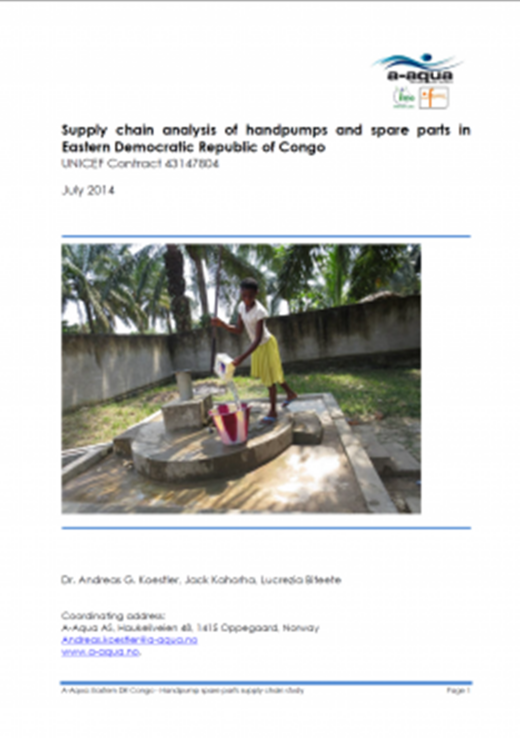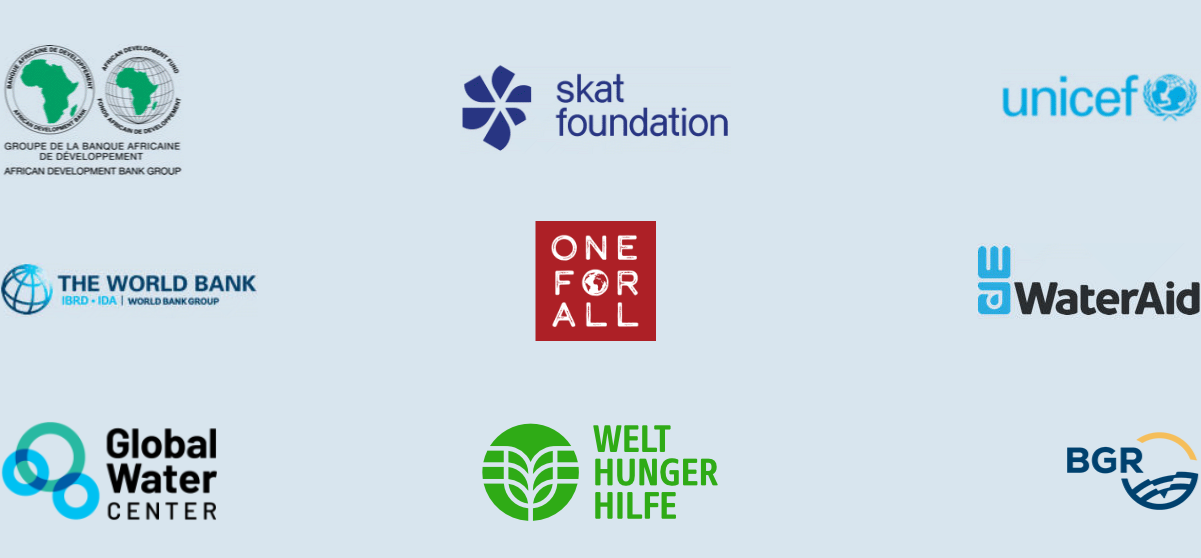Announcement from 09.12.2014
Essential reading for any organisation installing handpumps in DRC Est-ce que votre organisation a installé des pompes manuelles dans l’est de la RDC? Une étude met en exergue la nécessité d’améliorer les services d’eau plutôt que le nombre de projets d’eau

Supply chain analysis of handpumps and spare parts in Eastern Democratic Republic of Congo
© 2014 A-Aqua • A-Aqua
A new report, commissioned by UNICEF “Supply chain analysis of handpumps and spare parts in Eastern Democratic Republic of Congo” by A-aqua and Fontes Foundation found many failed handpump projects by NGOs, UN Agencies and government because: “Usually, no spare parts ordered together with handpumps by implementing actor”; “No market for spare parts because handpumps are ordered outside the locally established market”; “Lacking or only incomplete training of hand pump mechanics”; “No follow up or training after installation of handpump”.
Un nouveau rapport, mandaté par l’UNICEF, “Analyse des filières pompes manuelles et des pièces détachées dans l'est de la RDC” (publication en anglais) fait par A-aqua et la Fondation Fontes a révélé de nombreux échecs de projets de pompes manuelles mis en œuvre par des ONG, des agences des nations unies et du gouvernement. Les raisons pour expliquer ces échecs sont de différents ordre : « en général pas de pièces détachées commandées en même temps que les pompes manuelles par les acteurs chargés de la mise en œuvre » ; « pas de marché pour les pièces détachées car les pompes manuelles sont commandées à l’extérieur du marché local » ; « manque de formation ou formation incomplète des artisans réparateurs des pompes » ; « pas de suivi ou de formation après l’installation des pompes manuelles »..
More Information
» Supply chain analysis of handpumps and spare parts in Eastern Democratic Republic of Congo
This study is seen as an extension of a study carried out in 2009 by UNICEF, which mapped the handpumps and spare parts market in Africa as a whole. The study found that although large numbers of handpumps are sold in Africa each year, availability of spare parts at community level is still a great challenge. In addition, supply chains for handpumps and spare parts are normally separated, and there are challenges with availability, affordability as well as sufficient community structures to ensure demand.







 Google Übersetzer
Google Übersetzer